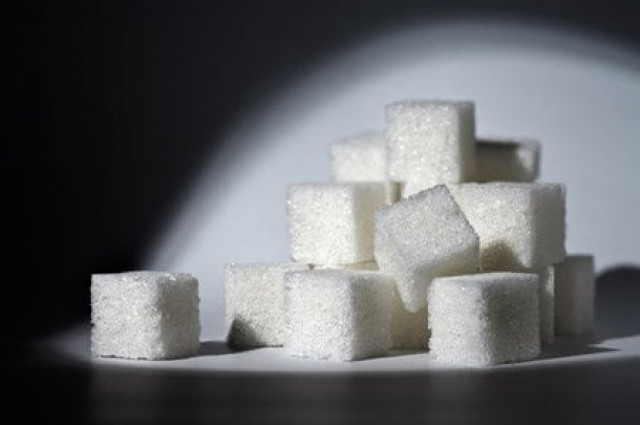Despite surplus sugar, consumers burdened with 25% subsidy
Problem is in sugar cane prices that are neither regulated nor determined by market.

Sugar cubes. PHOTO: REUTERS
Despite being one of the major producers of this commodity, the prices of sugar are relatively high for local consumers.
Furthermore, this year a surplus stock was accumulated and almost one million tons of sugar was stashed in warehouses (godowns). Millers have negotiated export deals but only with the support of Rs10 per kg subsidy. They are exporting at prices ranging from Rs40-43 per kg and collecting a subsidy.
This means that Pakistani retail prices are at least Rs10 per kg higher than the rest of the world. This translates into an almost 25% subsidy.
So we can rephrase the problem in the following words:
ECC allows sugar export, but defers decisions on CPEC and circular debt
Pakistan witnessed a bumper crop this year and our yields have improved. Under normal rules of supply and demand, a surplus would have accumulated and the consumers should have got the same commodity at lower prices.
Instead of this, consumers are getting sugar at higher prices and to dispose of the surplus stock, consumers/taxpayers are also bearing the burden of 25% subsidy.
Why are we consuming such expensive sugar? And why are we paying a subsidy to dispose it off whereas it can’t be given to us at lower prices? These figures are baffling.
The real problem doesn’t lie in the figures cited above. These figures are the tip of the iceberg. The real problem lies with the sugarcane prices that are not regulated or determined by the market.
According to the statistics presented by the Pakistan Sugar Mills Association, the support price for sugarcane has increased from Rs20 per maund to Rs180 per maund from 1994-95 to 2016 whereas retail sugar prices have increased from Rs14 to Rs62 in the corresponding period.
This means the price of the primary raw material increased by almost nine times whereas the selling price increased by 4.4 times only.
Hence, keeping all other variables constant, the increase in prices of raw material is more than double the increase in selling price. Therefore, the consumers and the millers are on the losing end in the last 25 years.
The high sugarcane prices have eliminated the incentive to improve for our farmers also. We might be helping them in the short run but in the long run we are making them uncompetitive in comparison to international competition.
Evidence of this long-term lack of competitiveness can be seen from comparatively lower yields of our sugarcane crop. Yield per hectare in Pakistan in 2016 was 58 tons, which is almost 26% less than Brazil (market leader) of 73 tons.
Subsidising sugar in itself is a big debate altogether. Giles Fraser, an eminent journalist, wrote an article in the Guardian on July 13, 2017 titled; “Sugar is poison. My heart attack has finally opened my eyes to the truth”.
In this article, he has substantiated that in the US, the sugar industry and their offshoots have manipulated research into heart diseases to underplay the role of sugar behind heart diseases. Hence, policymakers must be cognisant of this fact and must consider prioritising other avenues like health and education with positive externalities for channelling extremely scarce subsidy funds.
The current sugar export policy will definitely bring in valuable foreign exchange. This is something which must be appreciated as far as the balance of payments correction is considered.
However, for long-term increase in exports of sugar, we must correct the structural imbalances. This cannot be done in a couple of years. This requires policymaking with a long-term horizon in perspective. We need to incentivise our farmers to improve yields so that we can match our international competition.
Fearing price instability, govt defers decision on sugar export
To sum it up, Pakistani sugar is expensive for the local consumers. Furthermore, these consumers are also the taxpayers and these taxpayers are paying extra money for disposing of surplus stock.
Hence, our policymakers must also consider the interest of consumers and devise a long-term policy for correcting structural deficiencies so that the consumers also get sugar at or around international prices, our farmers produce better crop at competitive prices and the millers also get their lost margins.
The writer is a corporate banker and teaches economics
Published in The Express Tribune, October 16th, 2017.
Like Business on Facebook, follow @TribuneBiz on Twitter to stay informed and join in the conversation.



















COMMENTS
Comments are moderated and generally will be posted if they are on-topic and not abusive.
For more information, please see our Comments FAQ